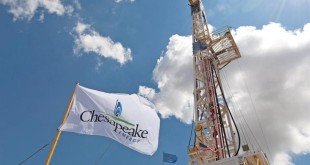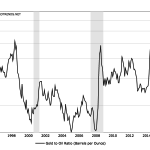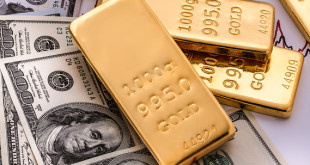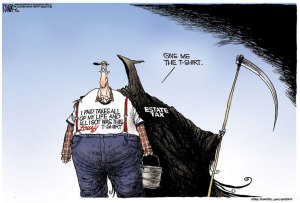The stock market took off last Friday Jan. 22nd like Space X’s Falcon 9 rocket, yet Chesapeake’s equity was left on the launch pad in the end, closing at $3.51, down 22% ytd and 82% yoy. The initial exuberance (+17% intra-day) at CHK cutting their pref dividends ($172mm in annual interest savings) gave way to the grave realization that all is not well, and time is is running out. Suspending the dividend on their prefs has been seen as prudent (prefs get paid after debt holders but before equity holders in a wind up). Notably, some of the pref dividend savings will be earmarked to buy back their secondary debt in the open market. Most CHK senior unsecured bond issues are trading distressed, wrapped around $30’s in price. Looking at a specific issue, the CHK 7.25% 12/15/2018 (senior unsecured) traded up to $40.00 for a yield of 47.5% . The bonds are rated B3/CCC+ with a recovery rating of 6 (the lowest rating, implying a recovery in the 0-10% band). This bond was trading above par for the first half on 2015 and only broke par to the downside in July 2015. CHK equity was at $10 when CHK 7.25% 18′ broke par (coincident with the common dividend being cut) and now sits at $3.51. Typically, one would expect the equity to massively underperform bonds on drawdown of this magnitude. Part of the reason for the poor recovery rating on the CHK senior unsecured is that there is a lot debt with priority ranking ahead of it. The CHK 8% 12/15/2022 (2nd Lien), a $2.5bln benchmark size issue, is rated B1/BB- and traded at $46.25 for a yield of 24.55%. The recovery rating on these bonds is a 1, implying a very high recovery rate (>90%).
The debt load being carried by the top 60 independent oil & gas groups stands at $206bln, up from $100bln in 2006. Chesapeake has $9.8bln of this indebtedness versus $2.3bln in equity market capitalization. A full 1/3rd of the 155 energy names covered by S&P are now rated B- or below with a barrage of fresh downgrades in the offing by Q2 2016 (175 discrete global energy names in the case of Moody’s).
Oil had a strong rally off the lows last week, but US E&P players are being Ubered by OPEC at these prices. One can imagine Saudi Arabia relishing the death throws of “unconventional oil”. The Saudi’s have not had a good run either, downgraded to A+ in Q4 15′ and running a deficit approaching >15% of GDP ($90bln), largely due to lower profits from oil exports. That said, Saudi Arabia’s marginal cost of production is $3/bbl, versus $15/bbl for Iran, $73 for US “Shale” oil ($57 Gulf of Mexico) and $90 in Canada.
Chesapeake expected their negative cash flow for 2015 to be -$2.5bln with oil at $50 per barrel and natural gas at $3.00 per MMBtu. Not privy to projected numbers yet for 2016, but the price side of the equation is not helping at $31.5bbl and $2.12 MMBtu. Part of the solution is curtailing both activity and capex, both of which CHK has undertaken, and efforts continue. In Q3 2015 there were 16 active CHK rigs and there are currently 9 operating. To meet commitments for 2016 Chesapeake might be able to get there with 4-6 rigs. Capex of $280mm is expected in 2016. Interest costs will be $660mm for 2016 and there is a $500mm debt maturity due in March 2016, (CHK 3.25% 03/15/2016 which trades at $96.50). Chesapeake had $1.8bln in cash at the end of Q3 15′. Chesapeake’s $4bln bank revolver was re-negotiated into a secured facility in Q4 15′. Secured facilities further diminish the likelihood of senior unsecured bondholders getting any substantive recovery in a tap out. As Le Fly has noted, banks generally like providing umbrellas when it is sunny, in the current environment, not so much. Chesapeake results for calendar 2015 will be out Feb. 24, 2016 with an expected $5.5bln loss for the year.
Unit operating cost have spiked 60% in the last decade for the industry overall and while cost cutting has allowed this number to come down to 46% (tightening staff and procurement) meaningfully deeper savings will likely require a deeper dive and could be more costly to implement.
Investors should buckle up, it is going to be a rocky ride. Chesapeake has some high profile holders, including Carl Ichan who owns 10.98% of the equity (holding as at last reporting, but offside >$1bln). When Carl was an infant, in the mid 1930’s, Aladdin kerosene lamps were all the rage. If we ever needed a genie, it is now. JCG
Disclosure: No current exposure to CHK equity or debt. Vetting 1st lien debt of minority (30%) owned oil services/fracking holding, FTS International, FTSINT 06/15/2020, hedged via CHK equity short.
Comments »


















